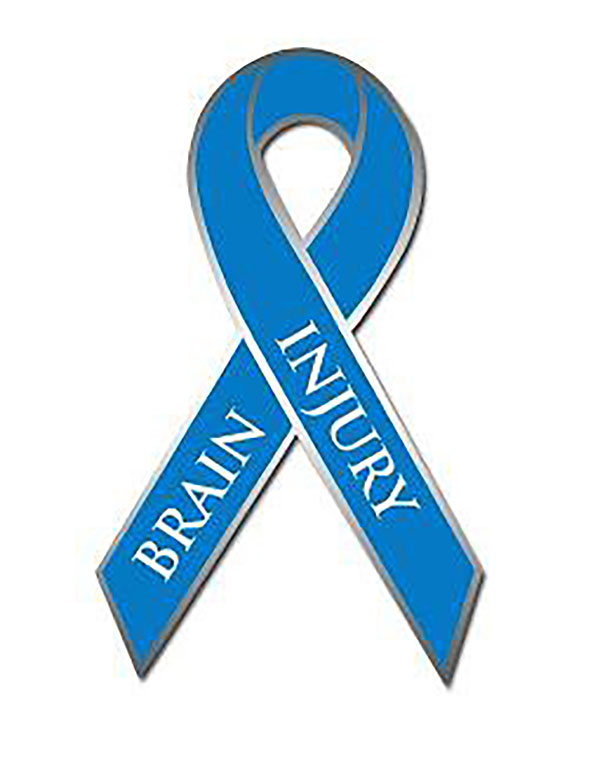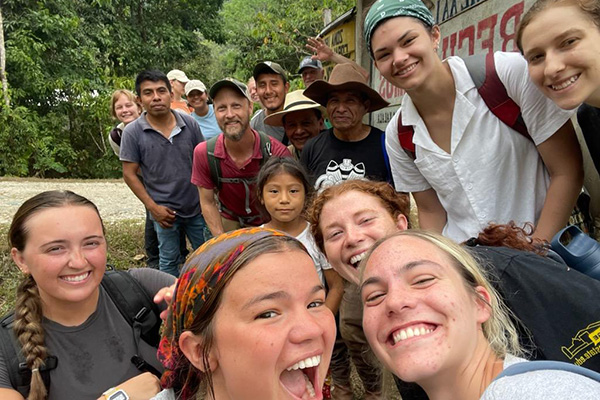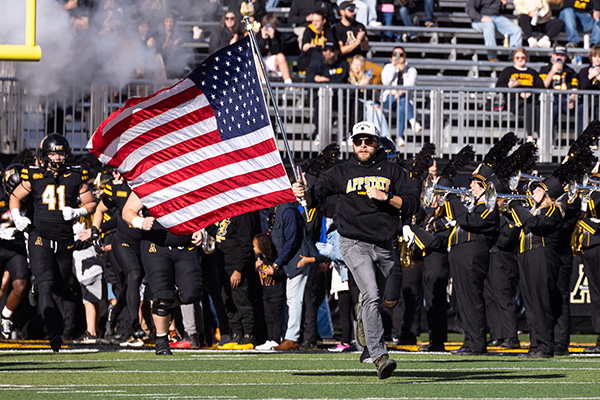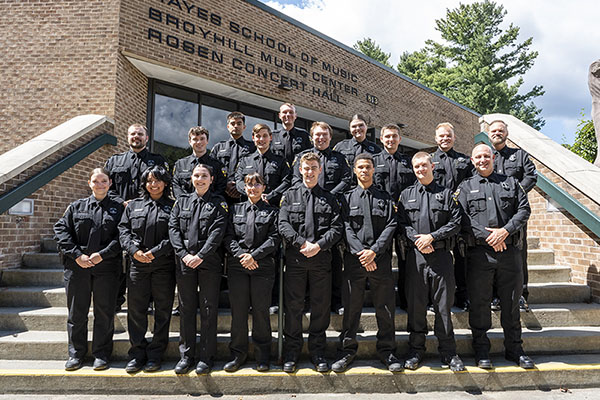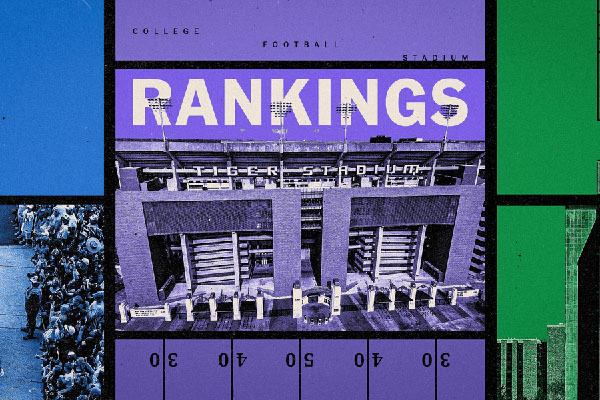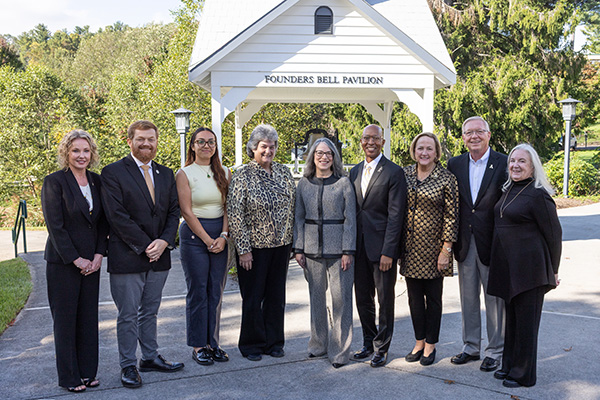BOONE—It can happen at any age – a significant fall, motor vehicle crash or sports injury that results in traumatic brain injury (TBI) from concussion, skull fracture, blood clot or bleeding in the brain.
The result can be loss of speech, memory problems, inability to concentrate for long periods of time, or mood swings.
According to the Centers for Disease Control an estimated 2.4 million children and adults in the U.S. sustain a traumatic brain injury (TBI) each year. More than 5.3 million children and adults in the U.S. live with a lifelong disability as a result of TBI. The leading causes of TBI are falls (35 percent), traffic accidents (17 percent) and striking or being struck by an object (16.5 percent).
On college campuses, disability services offices, like the one at Appalachian State University, work with students, staff and faculty members who may need short- or long-term accommodations to continue to thrive in the academic environment.
Their work takes on an added focus in March, which is Brain Injury Awareness Month. Appalachian’s Office of Disability Services (ODS) develops accommodation plans, when requested by those who have had a TBI, which is often called the invisible disability because individuals often have no visible sign of injury.
The work of ODS is guided by the American With Disabilities Act of 1990, which prohibits discrimination solely on the basis of disability in employment, public services, and accommodations, and Section 504 of the Rehabilitation Act of 1973, which prohibits discrimination on the basis of disability in programs and activities, public and private, that receive federal financial assistance.
Students
Winter sports, such as snowboarding, sledding and skiing, may be contributing to a rise in concussions seen in students visiting M.S. Shook Student Health Service on campus. “I certainly feel subjectively we are evaluating more and more head injuries and using the ‘concussion’ word,’ said Dr. Bob Ellison, director of student health service. “Over the past three years, our concussion diagnoses have increased from 55 in 2012 to 115 in 2014.”
Ellison recommends students use sport-specific helmets to reduce the seriousness of head injuries, especially when snowboarding.
Depending on how significant the brain injury, there usually is a range of short-term or long-term accommodations that can be provided to a student, but almost always those include testing accommodations, such as an extended time to take a test and in a setting that reduces distractions, and classroom accommodations,” said Maranda Maxey, ODS director.
Classroom accommodations can include the use of a voice recorder or someone taking notes for the student. Other accommodations might include electronic readers that “read” a test to the student or exams provided in large print, which can aid with concentration.
For students, provisional accommodations are usually developed a semester at a time based on the progress the student is making toward recovery from their brain injury.
“Faculty won’t know what a student’s disability is,” Maxey said, “but will see the student’s accommodation plan if the student requests that it be shared with their professor.” The accommodations developed with the student and ODS help level the playing field, Maxey said, but they often will also need additional services, such as tutoring or organized study groups offered through the university’s Learning Assistance Program. Students often are encouraged tp take a limited course schedule before returning to a typical five-course semester load.
Employees
Typically employees who experience a traumatic brain injury might leave their job for up to 12 weeks under the Family Medical Leave Act. When they return, their accommodations are specific to their job, Maxey said. For faculty, that might be a schedule with morning classes only to help them as they recover from fatigue that can also be associated with the injury.
A staff member’s accommodation might include a shorter work day as he or she returns to the work setting, or limited time spent on work that requires viewing a computer screen, for example.
Maxey said today’s technology, particularly software that is standard on Apple computers, have helped remove barriers to learning or office work such as text-to-speech, speech-to-text or magnification functions.
Community
A therapy group for individuals with acquired brain injury, which includes individuals who have had a stroke or aneurysm, was well as those with TBI, was recently formed by Dr. Louise Keegan, an assistant professor in the Department of Communication Sciences and Disorders at Appalachian.
The group, open to the public, is led by Keegan and graduate students in the department’s speech-language pathology program. As many as 10 individuals and their caregivers meet weekly at University Hall, the location of the university Communication Disorders Clinic.
“The focus is to help individuals with their skills related to communication and language skills and cognition by focusing on the situations they may encounter day-to-day,” Keegan said.
For instance, the group may go to a restaurant and work on strategies to cope with background noise that can be distracting. On March 17, members of the group will be at Plemmons Student Union from 10 a.m. to noon to work on skills needed to communicate with strangers as well as to advocate for those with brain injuries. They also will be giving away green shamrocks to commemorate Traumatic Brain Injury Awareness Month.
On March 31, members of the group will be at the Boone Mall from 10 a.m. to noon selling green awareness ribbons, pencils, and T-shirts.
Keegan said the group members have experienced a variety of events leading to their brain injury, from vehicle accidents and falls to strokes. And while the clinic has yet to assist veterans who have incurred blast-related brain injuries, Keegan expects that will change as word of the therapy group grows.
More information about the group is online at https://mindmattersboone.wordpress.com.
A personal account of TBI
Former Reich College of Education professor Stephen White knows how quickly a fall can change someone’s life. A fall at his home in 2009 resulted in a fractured skull and the traumatic brain injury left him unable to continue his work in the Department of Leadership and Educational Studies at Appalachian. He continues to cope with physical, cognitive, social, emotional and other problems associated with his injury. He had to leave his 14-year career at Appalachian and now focuses his efforts on raising awareness of traumatic brain injury and serving as an advocate for others with TBI.
The Brain Injury Association of America conducts an awareness campaign every March. The theme for the 2015-17 campaign is “Not Alone.” The campaign provides a platform for educating the general public about the incidence of brain injury and the needs of people with brain injuries and their families. The campaign also provides outreach within the brain injury community to de-stigmatize the injury, empower those who have survived, and promote the many types of support that are available.
The Brain Injury Association of North Carolina operates five resource centers across the state. To learn more, visit http://www.bianc.net.
About Appalachian State University
As a premier public institution, Appalachian State University prepares students to lead purposeful lives. App State is one of 17 campuses in the University of North Carolina System, with a national reputation for innovative teaching and opening access to a high-quality, cost-effective education. The university enrolls more than 21,000 students, has a low student-to-faculty ratio and offers more than 150 undergraduate and 80 graduate majors at its Boone and Hickory campuses and through App State Online. Learn more at https://www.appstate.edu.
What do you think?
Share your feedback on this story.
